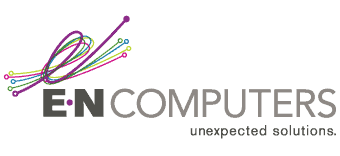
 by Scott Jack
by Scott Jack
Content Contributor, E-N Computers
7+ years experience in healthcare IT and tech support.
Creating an IT budget for your small business can feel mundane or painful when it should be a tool to advance your IT strategy. It can be challenging to create an IT budget that balances your technological needs with your financial realities. You must identify all the hardware and software you need for the year and how you will pay for it.
Like the rest of your budget, IT costs are either capital expenses or operating expenses. Hardware and software purchases were traditionally capital expenses since they were bought once and depreciated over several years. But with changes in the technology landscape, budgets are less clear-cut.
QUICK ANSWER:
What are capital expenses versus operating expenses when it comes to IT budgets?
If you’re paying for something monthly or annually, it’s an operating expense. Subscriptions for web-based software, and even short leases, fall into this category. Multi-year contracts and outright purchases are capitalized and may offer cost savings. Most importantly, your IT budget should be guided by a clear strategy for maximum impact.
How to Budget for Software as an Operating Expense
 As web-based software has become more common – think Office 365, QuickBooks Online, Adobe CC – so has the subscription model of payment. Instead of paying once for a software package every three to five years, businesses are paying monthly for software as a service. This isn’t great if you’re a government entity like a school or library because it’s far easier to get a chunk of cash allocated than to get higher operating expenses approved indefinitely.
As web-based software has become more common – think Office 365, QuickBooks Online, Adobe CC – so has the subscription model of payment. Instead of paying once for a software package every three to five years, businesses are paying monthly for software as a service. This isn’t great if you’re a government entity like a school or library because it’s far easier to get a chunk of cash allocated than to get higher operating expenses approved indefinitely.
To avoid monthly expenses, seek out annual or multi-year pricing options. Longer terms offer savings compared to the monthly cost or allow you to lock in a lower rate. That’s particularly beneficial for apps like Salesforce which have an automatic rate increase at renewal.
Examples of Other Operating Expenses in Your IT Budget
 Usually, our goal as business owners is to reduce operating expenses. It improves the company’s financial well-being and resilience. So, when building an IT budget, it can be helpful to compare the value we get from a technology or service to the ongoing expense it incurs. We also want to see what can be eliminated or reduced in cost.
Usually, our goal as business owners is to reduce operating expenses. It improves the company’s financial well-being and resilience. So, when building an IT budget, it can be helpful to compare the value we get from a technology or service to the ongoing expense it incurs. We also want to see what can be eliminated or reduced in cost.
Some IT operating expenses aren’t avoidable. Your internet service is a prime example. Today, business screeches to a halt if internet access is lost. Because of this, both a primary and backup internet connection are necessary operating expenses. This cost does not vary month to month.
Other operating expenses are necessary but variable in cost. For example, agencies with many field workers pay for cellular data plans. Some infrastructure-as-a-service is billed according to the time and processing power used. In both cases, higher than expected usage will increase your operating expenses.
Additionally, many technology companies now offer monthly payments. They’ve become widely available, even the norm, for web-based software as well as hardware and software maintenance contracts. Hardware leases of 12 months or less are also classified as operating expenses. For these types of monthly expenses, you may be able to effectively capitalize them by making an upfront payment for a term longer than one year.
Examples of Capital Expenses in Your IT Budget
 Most IT capital expenses are for purchasing hardware and licensing software. End-user hardware like desktops, laptops, and tablets are replaced every three to five years. Servers and network equipment are often used for five to seven years before being replaced. Perpetual software licenses, such as those for Microsoft Windows or paid mobile apps, are also capitalized.
Most IT capital expenses are for purchasing hardware and licensing software. End-user hardware like desktops, laptops, and tablets are replaced every three to five years. Servers and network equipment are often used for five to seven years before being replaced. Perpetual software licenses, such as those for Microsoft Windows or paid mobile apps, are also capitalized.
You may consider a capital lease, or one-dollar buyout, if you want to own equipment without a large upfront payment. These leases put debt on your balance sheet and have higher monthly payments than fair market value leases but allow you to keep the equipment at the end of the contract and provide some tax advantages.
When it comes to software, multi-year subscriptions can be capitalized. Paying for web-based software this way has at least two other benefits. First, multi-year plans sometimes come at a discounted rate. Second, they allow you to lock in the current rate instead of seeing an increase each year.
Is OpEx or CapEx better for Small Business IT Budgets?
 With so many payment options available, it’s important to look at the total cost of ownership (TCO). Subscriptions are less expensive upfront but can be more expensive than an on-premises solution over a five-year period. Similarly, leases let you avoid large capital expenditures, but they have financing costs built in that can make them more expensive than buying hardware outright. Making the best purchasing decision starts with knowing your total cost of ownership.
With so many payment options available, it’s important to look at the total cost of ownership (TCO). Subscriptions are less expensive upfront but can be more expensive than an on-premises solution over a five-year period. Similarly, leases let you avoid large capital expenditures, but they have financing costs built in that can make them more expensive than buying hardware outright. Making the best purchasing decision starts with knowing your total cost of ownership.
There are other factors to consider, though. For example, you may need lower upfront costs and be willing to pay more over time. Or if flexibility is important, you may prefer an annual contract to a multi-year one. The features available in software also matter when comparing web-based applications with installable ones.
Whether you buy web-based or installable software might come down to the feature set. Installable software tends to be more feature rich because it has been around longer. But it can also feel outdated and clunky. Web-based software, built from the ground up, is streamlined but may be missing esoteric features that are not widely used. Evaluating software features and comparing them against what you use regularly may affect your purchasing decision.
How We Build IT Budgets
 In many small organizations, IT budgets are a dreaded afterthought. Managers wonder how they are supposed to formulate a budget when they don’t know what will happen or what will be needed in the coming year. Because they are thinking reactively instead of proactively, they are not able to defend their budget well, and it gets severely cut. At its root, the problem with IT budgets is that too many organizations do not have an IT strategy.
In many small organizations, IT budgets are a dreaded afterthought. Managers wonder how they are supposed to formulate a budget when they don’t know what will happen or what will be needed in the coming year. Because they are thinking reactively instead of proactively, they are not able to defend their budget well, and it gets severely cut. At its root, the problem with IT budgets is that too many organizations do not have an IT strategy.
At E-N Computers, we take a comprehensive approach to IT. We start with understanding your business, the problems you’re facing, and your goals. Then we will work with you to design an IT strategy that fits your organization.
The strategic roadmap lays out what needs to happen over the next year. It helps you see what changes or improvements need to happen to stabilize and support future growth. And it includes a budget for improvements and routine maintenance so that you can plan for future expenditures. This way, your strategy is informing your budget.
When your IT budget is guided by your strategy, you’re able to rest easy. The budget is no longer a money grab trying to prepare for the unexpected. Instead, it’s a byproduct of your overarching goals and plans. Each line item has a purpose.
Our budgets build in regular upgrades for end-user equipment and servers plus as-needed network upgrades. Replacing equipment on a schedule is an excellent way of making sure that your devices remain reliable. Otherwise, as your equipment ages past its useful life, you would begin to encounter performance issues and unplanned failures that seriously affect your business.
Learn More
READ: What is Business/IT Strategy Alignment?
READ: What Is Included in Managed IT Services?
What is an IT strategy? It uses technology in a way that meets the unique needs and goals of your business so that the business is more productive, and customers are better served. A solid IT strategy improves your budget, eliminating unnecessary costs and correctly implementing technology for better returns. An MSP with a good strategic planning process can help you achieve business-IT alignment.
At E-N Computers, our managed IT services include help desk and onsite support; cybersecurity, including remote monitoring and management; strategy, budget, and compliance consultation; and backup and disaster recovery. We provide full-service IT so that you can stop stressing over technology and start getting work done. You can find a brief overview of each element of our IT services in this article.
Take the IT Maturity Assessment

Is your business ready to weather changes, including employee turnover? Find out by taking our IT maturity assessment.
You’ll get personalized action items that you can use to make improvements right away. Plus, you’ll have the opportunity to book a FREE IT strategy session to get even more insights into your IT needs.

Industries
Locations
Waynesboro, VA
Corporate HQ
215 Fifth St.
Waynesboro, VA 22980
Sales: 540-217-6261
Service: 540-885-3129
Accounting: 540-217-6260
Fax: 703-935-2665
Washington D.C.
1126 11th ST. NW
Suite 603
Washington, DC 20001-4366
Sales: 202-888-2770
Service: 866-692-9082
VA DCJS # 11-6604
Locations
Harrisonburg, VA
45 Newman Ave.
Harrisonburg, VA 22801
Sales: 540-569-3465
Service: 866-692-9082
Richmond, VA
3026A W. Cary St.
Richmond, VA 23221
Sales: 804-729-8835
Service: 866-692-9082
